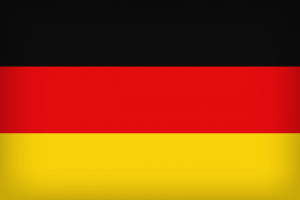Difference between revisions of "Language/German/Culture/Geography-and-Landmarks"
m (Quick edit) |
m (Quick edit) |
||
| Line 122: | Line 122: | ||
[[Category:0-to-A1-Course]] | [[Category:0-to-A1-Course]] | ||
[[Category:German-0-to-A1-Course]] | [[Category:German-0-to-A1-Course]] | ||
==Related Lessons== | |||
* [[Language/German/Culture/Popular-Musicians-and-Genres|Popular Musicians and Genres]] | |||
* [[Language/German/Culture/Education|Education]] | |||
* [[Language/German/Culture/Cuisine-and-Traditions|Cuisine and Traditions]] | |||
* [[Language/German/Culture/Movies,-TV-and-Literature|Movies, TV and Literature]] | |||
* [[Language/German/Culture/Germany-Timeline|Germany Timeline]] | |||
* [[Language/German/Culture/Austria-Timeline|Austria Timeline]] | |||
{{German-Page-Bottom}} | {{German-Page-Bottom}} | ||
Revision as of 13:09, 12 March 2023
As a German language teacher, it is important not only to teach the language but also to expose students to the culture and history of the German-speaking countries. In this lesson, we will explore the geography and famous landmarks, cities, and regions in Germany and other German-speaking countries.
Germany
Germany is located in the heart of Europe, bordered by Denmark to the north, Poland and the Czech Republic to the east, Austria and Switzerland to the south, and France, Luxembourg, Belgium, and the Netherlands to the west. The country is divided into 16 states, each with its own unique landscape, culture, and dialect.
Landmarks
Germany is home to many famous landmarks, both ancient and modern. Some of the most popular include:
- Brandenburg Gate - A symbol of peace and reunification
- Cologne Cathedral - A Gothic masterpiece and UNESCO World Heritage Site
- Neuschwanstein Castle - A fairytale castle perched on a hilltop
- Berlin Wall - A reminder of a divided Germany
- Zugspitze - Germany's highest mountain, located in the Bavarian Alps
Cities
Germany's cities are known for their rich culture, history, and architecture. Some of the most famous cities include:
- Berlin - The capital city known for its vibrant nightlife and historical landmarks
- Munich - The home of Oktoberfest and Bavarian culture
- Hamburg - A major port city with a rich maritime history
- Cologne - A cultural hub with a vibrant arts scene
- Frankfurt - A financial center and the birthplace of Goethe
Regions
Germany is comprised of many regions, each with its own distinct identity and traditions. Some of the most popular regions include:
- Bavaria - Known for its charming villages, traditional festivals, and mountain landscapes
- Black Forest - A dense forest in southwestern Germany with picturesque towns and natural beauty
- Rhine Valley - A scenic region along the Rhine River known for its medieval castles and vineyards
Austria
Austria is a landlocked country located in central Europe, bordered by Germany to the northwest, the Czech Republic to the north, Slovakia to the northeast, Hungary to the east, Slovenia and Italy to the south, and Switzerland and Liechtenstein to the west. The country is known for its stunning Alpine scenery, rich cultural history, and famous musicians and artists.
Landmarks
Austria is home to many famous landmarks, including:
- Schönbrunn Palace - A former imperial palace and UNESCO World Heritage Site
- Hofburg Palace - The former imperial palace and seat of government
- Salzburg Old Town - A picturesque old town and UNESCO World Heritage Site
- St. Stephen's Cathedral - A Gothic masterpiece located in the heart of Vienna
Cities
Austria's cities are known for their historical landmarks, cultural events, and gastronomic delights. Some of the most famous cities include:
- Vienna - The capital city known for its imperial flair, classical music, and coffeehouse culture
- Salzburg - The birthplace of Mozart and a cultural hub in the Alps
- Innsbruck - A charming alpine town surrounded by mountains
- Graz - A vibrant student city known for its culinary scene
Regions
Austria is divided into nine regions, each with its own unique landscape, culture, and traditions. Some of the most popular regions include:
- Tyrol - A mountainous region known for skiing and winter sports
- Salzkammergut - A stunning lake region with crystal clear waters and charming towns
- Vienna Woods - A forested region surrounding Vienna, known for its hiking trails and wine country
Switzerland
Switzerland is a landlocked country located in western Europe, bordered by France to the west, Germany to the north, Austria and Liechtenstein to the east, and Italy to the south. The country is known for its towering Alpine peaks, pristine lakes, and chocolate and cheese.
Landmarks
Switzerland is home to many famous landmarks, including:
- Matterhorn - One of the most iconic mountains in the world, located in the Swiss Alps
- Rhine Falls - The largest waterfall in Europe, located near Zurich
- Chapel Bridge - A historic covered bridge in the city of Lucerne
- Chillon Castle - A medieval castle located on the shores of Lake Geneva
Cities
Switzerland's cities are known for their cosmopolitan flair, cultural events, and stunning architecture. Some of the most famous cities include:
- Zurich - The largest city and financial center of Switzerland
- Geneva - A hub for international business and diplomacy
- Bern - The capital city and a UNESCO World Heritage Site
- Basel - A cultural hub and home to many museums and galleries
Regions
Switzerland is divided into 26 cantons, each with its own unique landscape, culture, and traditions. Some of the most popular regions include:
- Bernese Oberland - A mountainous region known for its lakes, hikes, and winter sports
- Valais - A region known for its alpine peaks, vineyards, and thermal spas
- Ticino - A region influenced by Italian culture, known for its Mediterranean climate and palm trees
Conclusion
Learning about geography and landmarks of German-speaking countries is important to understand the culture and people of these regions. By exploring famous landmarks, cities, and regions, students will gain a deeper appreciation for the rich history and traditions of Germany, Austria, and Switzerland.
Sources
Related Lessons
- Popular Musicians and Genres
- Education
- Cuisine and Traditions
- Movies, TV and Literature
- Germany Timeline
- Austria Timeline
